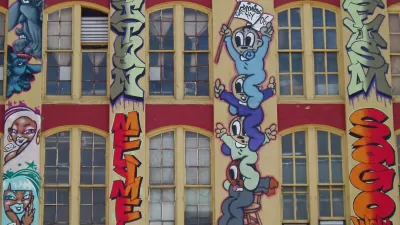A new interactive map produced by researchers at Columbia University reveals the energy use of nearly every building in New York City. Besides being an interesting curiosity, the map is a crucial first step in improving energy efficiency.
New Yorkers love to compare themselves to their neighbors across the city (who has the best nightlife? who has the best pizza parlor? who has the best park? who has the most hipsters?). Now they can compare who uses the most (or least) energy.
In a city in which over two-thirds of its total energy use come from buildings, knowing how much specific buildings, or areas of the city, are consuming energy in comparison with other areas may prove crucial in helping to curb energy usage.
"The lack of information about building energy use is staggering," said Bianca Howard, lead author and Columbia Engineering PhD student, in a statement. "We want to start the conversation for the average New Yorker about energy efficiency and conservation by placing their energy consumption in the context of other New Yorkers. Just knowing about your own consumption can change your entire perspective."
Furthermore, according to author Ariel Schwartz, "Knowing which areas of the city consume more energy could also inform future decisions about local energy generation. Maybe a landlord with some glaringly inefficient buildings will want to install some solar panels, or perhaps building tenants will band together to work on other energy-efficient options (i.e., capturing and reusing building waste heat)."
FULL STORY: A Block-By-Block Look At The Energy Consumption Of New York’s Buildings

Planetizen Federal Action Tracker
A weekly monitor of how Trump’s orders and actions are impacting planners and planning in America.

Map: Where Senate Republicans Want to Sell Your Public Lands
For public land advocates, the Senate Republicans’ proposal to sell millions of acres of public land in the West is “the biggest fight of their careers.”

Restaurant Patios Were a Pandemic Win — Why Were They so Hard to Keep?
Social distancing requirements and changes in travel patterns prompted cities to pilot new uses for street and sidewalk space. Then it got complicated.

Platform Pilsner: Vancouver Transit Agency Releases... a Beer?
TransLink will receive a portion of every sale of the four-pack.

Toronto Weighs Cheaper Transit, Parking Hikes for Major Events
Special event rates would take effect during large festivals, sports games and concerts to ‘discourage driving, manage congestion and free up space for transit.”

Berlin to Consider Car-Free Zone Larger Than Manhattan
The area bound by the 22-mile Ringbahn would still allow 12 uses of a private automobile per year per person, and several other exemptions.
Urban Design for Planners 1: Software Tools
This six-course series explores essential urban design concepts using open source software and equips planners with the tools they need to participate fully in the urban design process.
Planning for Universal Design
Learn the tools for implementing Universal Design in planning regulations.
Heyer Gruel & Associates PA
JM Goldson LLC
Custer County Colorado
City of Camden Redevelopment Agency
City of Astoria
Transportation Research & Education Center (TREC) at Portland State University
Camden Redevelopment Agency
City of Claremont
Municipality of Princeton (NJ)



























